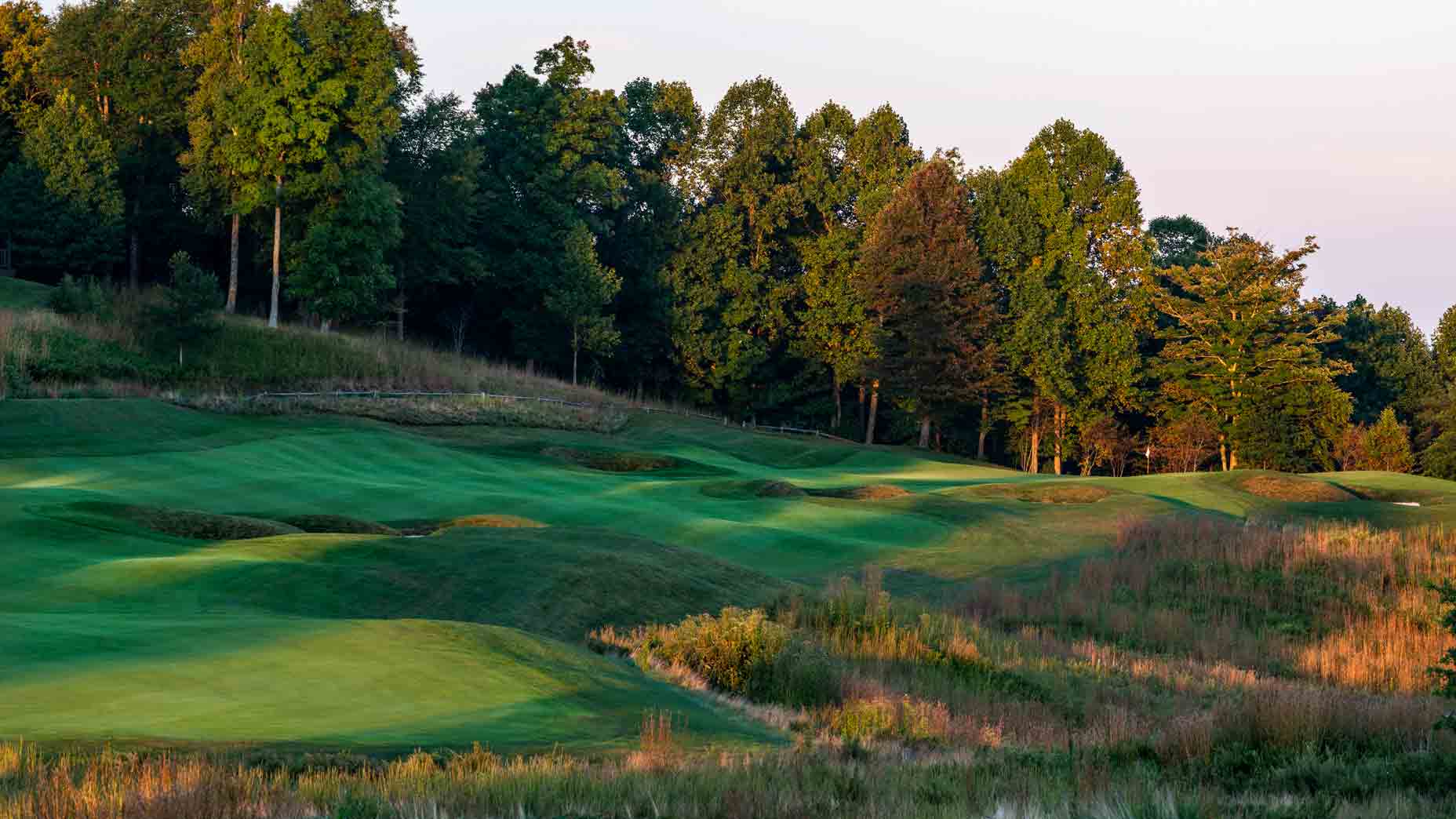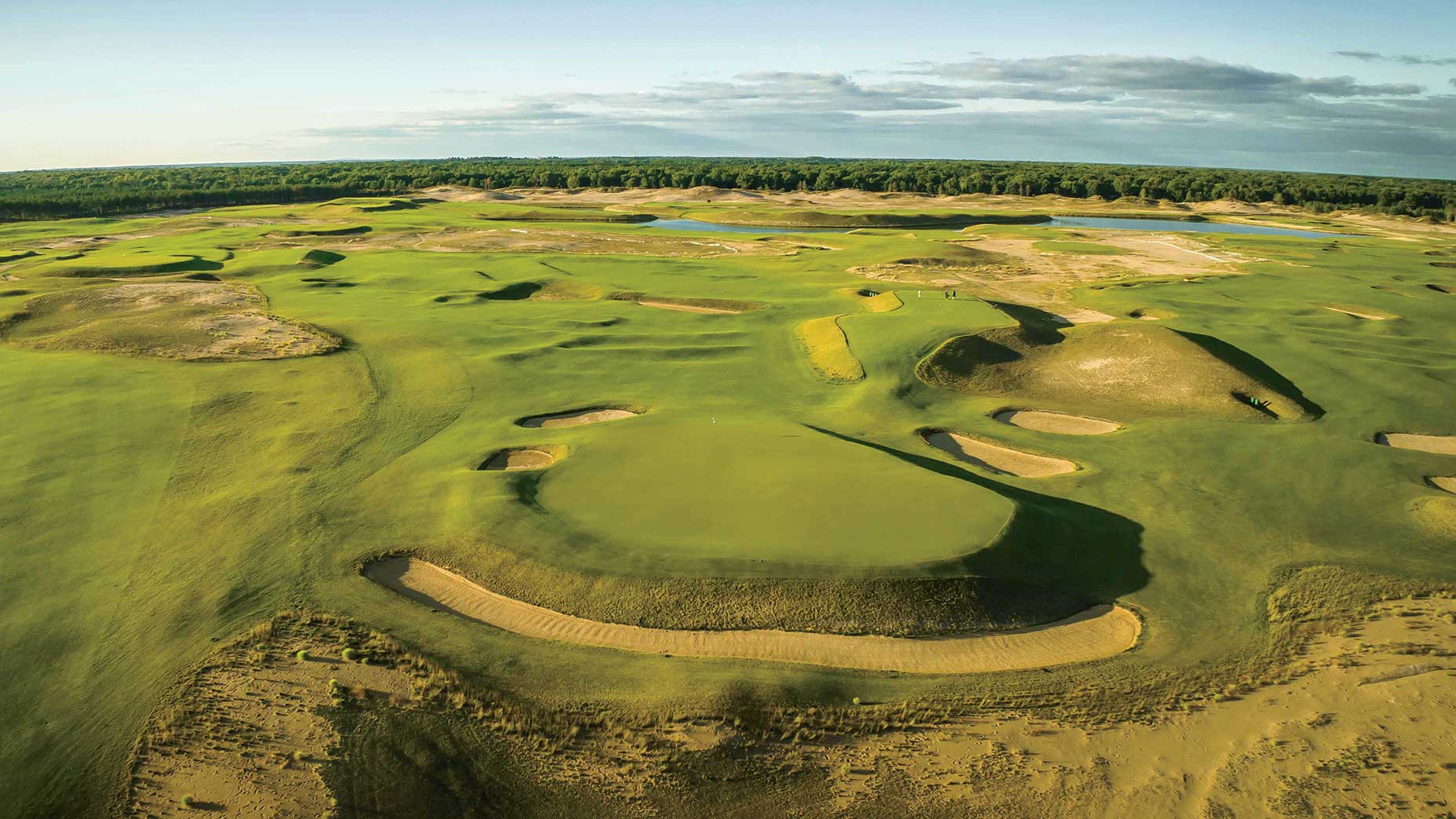As part of GOLF’s rigorous ratings process for our newly released Top 100 Courses in the U.S. and Top 100 Courses You Can Play rankings, our fleet of 100-plus expert panelists identified the best golf courses in every state.
You can check out the links below to browse all of our course rankings, or scroll down to see the best courses in Virginia. And if you’re looking to create your own trip in the future, you’d be wise to let GOLF’s new Course Finder tool assist you. Here, you can toggle all of our lists — Top 100 public, best munis, best short courses, best par-3s and more — or filter by price to create the perfect itinerary for your next trip.
GOLF’s other course rankings: Top 100 Courses in the World | Top 100 Courses in the U.S. | Top 100 Courses You Can Play | Top 100 Value Courses in the U.S. | America’s Best Municipal Courses | The 100 Best Short Courses in the World
Check out our all-new travel podcast Destination GOLF. Listen and subscribe wherever you get your podcasts: APPLE | SPOTIFY | IHEART | AMAZON

The best golf courses in Virginia (2024/2025)
SYMBOL GUIDE
# = Top 100 Course in the U.S.
Y = Top 100 You Can Play in the U.S.
V = Top 100 Value Course in the U.S.
P = Public/Resort
Ed. note: Some courses were omitted from our rankings because they did not receive enough votes.
1. Omni Homestead – Cascades (Hot Springs) [Y, P]
A William Flynn masterpiece in the heart of Virginia’s Allegheny Mountains, the Cascades features rolling terrain and strategic bunkering. Legend has it both A.W. Tillinghast and Seth Raynor passed on the challenging site before then little-known Flynn accepted the design job. He had to dynamite through limestone to find some of the fairways, but in 12 months he carved out one of America’s finest mountain tracks. Young Sam Snead honed his game here and once said that if he could only play one course, Cascades would be it. The remote location makes it a tough track to get to, but for fans of Slammin’ Sammy and Golden Age architecture, it’s a must-visit.
2. Robert Trent Jones GC (Gainesville)
3. Kinloch (Manakin Sabot)
4. Farmington CC (Charlottesville)
5. Olde Farm (Bristol)
6. CC of Virginia – James River (Richmond)
7. The Foundry (Powhatan)
8. Primland (Meadows of Dan) [Y,P]

When oil billionaire Didier Primat bought 12,000 acres in the Blue Ridge Mountains of Virginia, he could have never envisioned the course that would be built here. British architect Donald Steele and associate Martin Ebert laid out 18 excellent holes with the help of ingenuity and dynamite, shaping the hilly terrain to their creative will. Among the most memorable holes is the par-5 opener, where the Pinnacles of Dan serve as the backdrop. Deep gullies line the property’s edge, and rock outcroppings bring intrigue to the design. The open-faced greens welcome more than just an aerial game.
9. Ballyhack (Roanoke)
10. Keswick Hall – Full Cry (Keswick) [Y,P]
The course’s architectural identity has changed three times since its inception in 1949, with an original design by Fred Findlay and an Arnold Palmer redesign in the early 1990s. Come 2014, another firm with a heralded pedigree would put its thumbprint on the property: Pete and Alice Dye. The course features classic Dye staples, including railroad ties and penal bunkering, but you wouldn’t characterize it as “Dye-abolical.” Generous greens with short-grass openings encourage all manner of shot-making, and the fairways are also welcoming. Full Cry is a fascinating and inviting change from the Dyes’ usual m.o., a course that makes high-handicappers feel comfortable while keeping the interest of better players.
11. Golden Horseshoe – Gold (Williamsburg) [P]
12. The Club at Creighton Farms (Aldie)
13. Birdwood (Charlottesville) [P]
14. Pete Dye River Course of Virginia Tech (Radford) [P]
15. Hermitage – Sabot (Manakin Sabot)
How we rank our courses
For our newly released Top 100 U.S. and Top 100 You Can Play lists — a process that helped us create 50 best-in-state rankings — each panelist was provided a ballot that consisted of 609 courses. Beside the list of courses were 11 “buckets,” or groupings. If our panelists considered a course to be among the top three in the U.S., they ticked that first column. If they believed the course to be among Nos. 4-10, they checked that column, followed by 11-25, 26-50, and so on out to 250+ and even a column for “remove.” Panelists were also free to write in courses that they felt should have been included on the ballot.
Points were assigned to each bucket; to arrive at an average score for each course, we divide its aggregate score by the number of votes. From those point tallies, the courses are then ranked accordingly. It is an intentionally simple and straightforward process. Why? Because it historically has produced results that are widely lauded. Like the game itself, there’s no need to unnecessarily complicate things or try to fix something that already works so well.
The key to the process is the experience and expertise of our panel. Hailing from 15 nations and all the worldwide golf meccas, each of our 127 handpicked panelists has a keen eye for architecture, both regionally and globally. Many of our panelists have played more than 1,000 courses in 20-plus countries, some over 2,000. Their handicaps range from +5 to 15.
Because the nature of course rating is so intensely subjective, no one opinion carries the day. The only way, then, to build meaningful consensus is to incorporate this diversity of panelists and experiences into one ranking.
Need help unriddling the greens at your home course? Pick up a custom Green Book from 8AM Golf affiliate GolfLogix.










